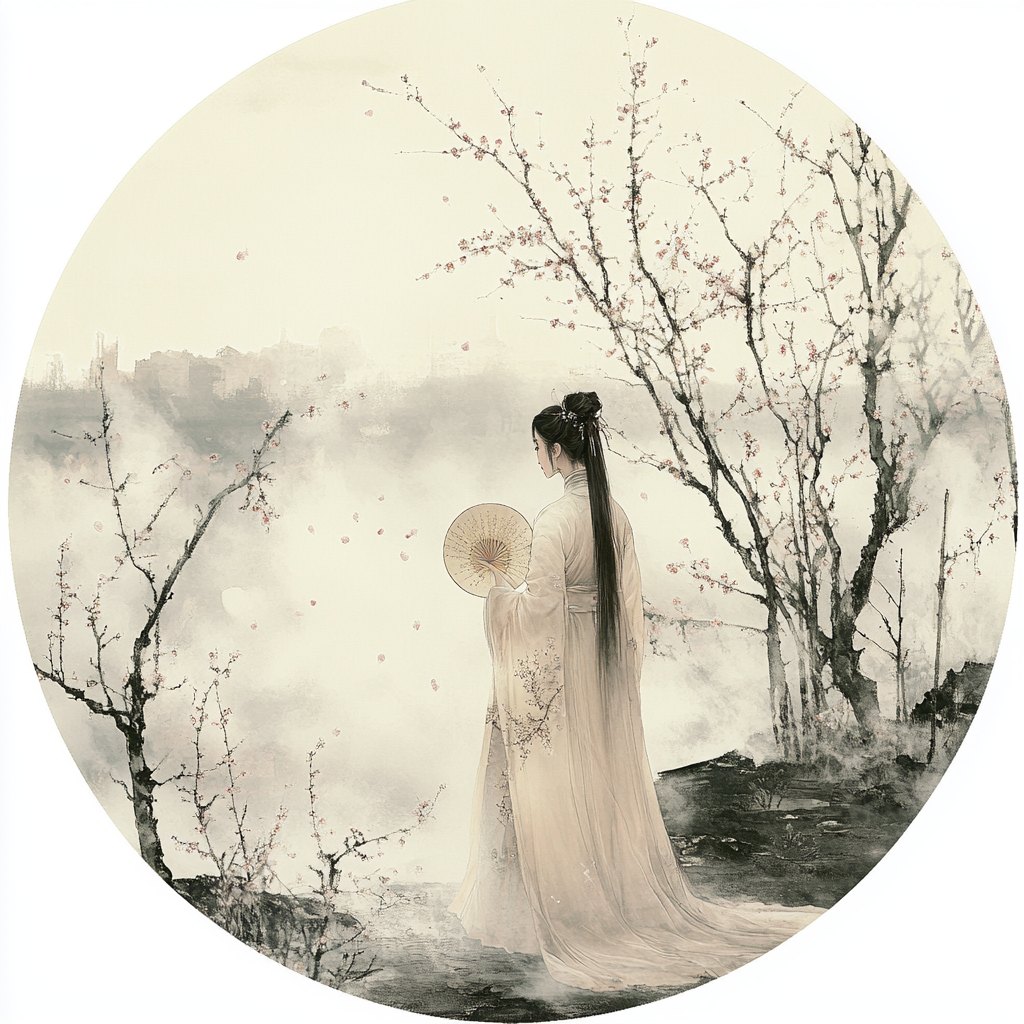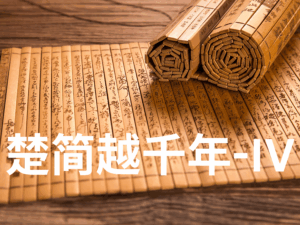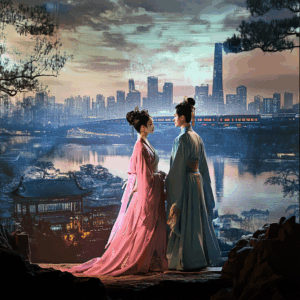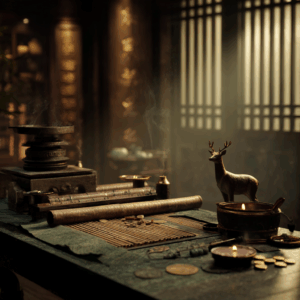一縷梅香,掩不住一位才女內心的風雪。
香氣不語,卻道盡她筆下字字句句的堅韌與孤傲。
本篇探尋的是「李清照與梅香」,開篇便回望她宛如梅花般的命運軌跡。
從少女時代的詞中青梅,到中年亂世流離中的暗香浮動,李清照的人生,就像一株雪中怒放的梅,寒而不折,香自天成。
她出生於書香門第,詩書與香氣相伴。年輕時的她寫道「薄霧濃雲愁永晝,瑞腦銷金獸」(《醉花陰·薄霧濃雲愁永晝》),一縷瑞腦香便是她閨中靜坐的伴侶。
婚後隨夫南渡,漂泊於亂世,她仍未棄詞筆,更不棄香氣。
她寫「玉爐沈水裊殘煙」(《浣溪沙·淡蕩春光寒食天》),那是她將哀思封存於香霧中的證據。
香,是她精神的寄託,也是她情感的載體。
而在眾香之中,她最愛的,是梅香。
杭州之冬,梅花如約綻放。無論是孤山的斜影,還是靈隱的幽徑,處處皆有暗香浮動。
人說梅花苦寒,卻不知,李清照筆下的梅花,是香氣引來的苦寒。
「疏影橫斜水清淺,暗香浮動月黃昏。」(宋代林逋的《山園小梅二首》),是她為自己立下的精神像。
她未必見得每一朵梅,但卻在每一次焚香中,把自己變成了梅。
若你來到杭州,請行走在賞梅路線中最幽靜的一段。
在斜陽裡焚起一縷梅香,閉上雙眼,或許你會聽見她低聲吟唱—「此情無計可消除,才下眉頭,卻上心頭。」(《一剪梅》)
香,是時間的記憶,也是情感的靈魂。
李清照的梅香,不只是香,它是孤高的影,是隱忍的聲,是亂世中不曾熄滅的一盞心燈。
在寧杭高鐵的軌道上,每一站彷彿都曾聽過她的一聲輕嘆。
杭州西湖的殘雪、南京梅嶺的孤枝……皆似她未完的詩章。
鐵路是線,香氣是魂;
行萬里路,只為一縷清香入夢。
李清照:《一剪梅》
在斜陽裡焚起一縷梅香,閉上雙眼,或許你會聽見她低聲吟唱 —《一剪梅》:
紅藕香殘玉簟秋。
輕解羅裳,獨上蘭舟。
云中誰寄錦書來,雁字回時,月滿西樓。
花自飄零水自流。
一種相思,兩處閑愁。
此情無計可消除,才下眉頭,卻上心頭。
譯文:
荷已殘,香已消,冷滑如玉的竹席,透出深深的涼秋。
輕輕的脫下羅綢外裳,一個人獨自躺上眠床。
仰頭凝望遠天,那白云舒卷處,誰會將錦書寄來?正是雁群排成“人”字,一行行南歸時候。
月光皎潔浸人,灑滿這西邊獨倚的亭樓。
花,自顧地飄零,水,自顧地漂流。
一種離別的相思,牽動起兩處的閑愁。
啊,無法排除的是—這相思,這離愁,剛從微蹙的眉間消失,又隱隱纏繞上了心頭。
資料來源:一剪梅·紅藕香殘玉簟秋
- 梅雪無聲落筆端,暗香浮動到江南。
- 風中詞影猶如夢,一瓣清香寄遠人。
- 此生難得純粹意,唯有梅香似舊詩。
- 江梅瘦影橫窗白,字字憔悴不為誰。
- 殘紅未盡心已冷,暗香猶解舊衣痕。
- 夢裡梅花三兩枝,醒來字裡是相思。
- 香消玉殞無人見,詞膽詩心共雪寒。
- 月下青梅吹入墨,一行小字寫平生。
- 再婚也罷離婚也罷,只願香中不褪真。
- 清香不屬江南雪,卻隨高鐵入夢來。
自製臘梅香膏 · 簡易四步驟:
- 晴天採摘:選擇晴朗天氣,採摘素心臘梅,香氣濃郁、花朵乾爽。
- 挑選花蕾:只摘未全開的花蕾,香味最足,效果最佳。
- 蒸煮融合:將花蕾放入陶罐,加入甜杏仁油(1:8比例),蒸半小時、放涼,重複三次,靜置窖藏十天。
- 香氣綻放:完成後即可使用,塗抹或熏香皆宜,享受幽幽臘梅之香。
資料來源:自製臘梅香膏,香氣縈繞的祕密
歌曲 《暗香浮動》|梅香 · 李清照 · 寧杭高鐵
寧杭高鐵
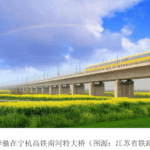


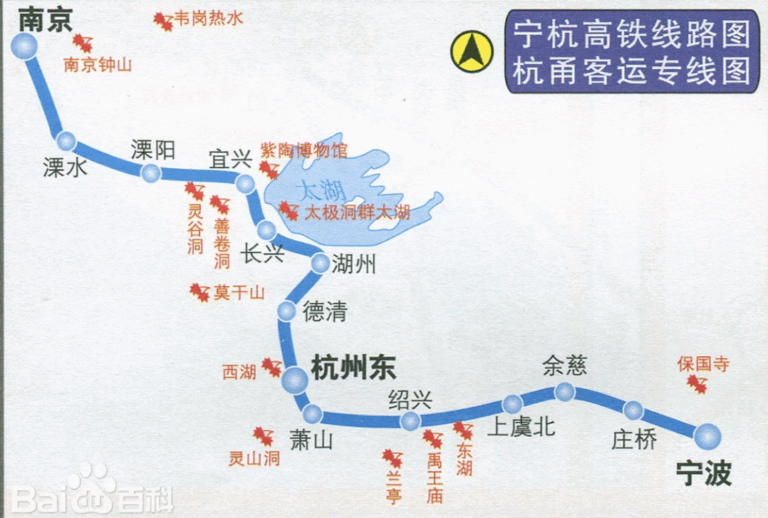
寧杭高速鐵路連接江蘇南京與浙江杭州,是華東地區重要的高鐵幹線之一,也是「長三角」城際交通網的關鍵路段。
這條高鐵於2009年開工,2013年7月1日正式通車,全長約256公里,共設11個站點,包括南京南、溧陽、宜興、湖州等地,最終抵達風情萬種的杭州東站。
列車時速最高可達350公里,最快70分鐘即可從南京直達杭州,讓昔日需數小時的江南之旅,如今成為一場輕盈的短途漫遊。從六朝古都的金陵,到詩意濃濃的西子湖畔,沿途綠意盎然,水鄉氣息撲面而來。
寧杭高鐵不僅讓旅程更快,也讓文化更近。沿線小城各具風貌,無論是泡一壺茶在宜興、賞一片竹海於長興,還是靜聽杭城西湖的鐘聲,都能在這條高鐵線上輕鬆抵達。
資料來源:寧杭高速鐵路
寧杭高鐵
Sie sehen gerade einen Platzhalterinhalt von YouTube. Um auf den eigentlichen Inhalt zuzugreifen, klicken Sie auf die Schaltfläche unten. Bitte beachten Sie, dass dabei Daten an Drittanbieter weitergegeben werden.
Mehr InformationenCRH380BL型高速動車組 和 CRH380A型高速動車組
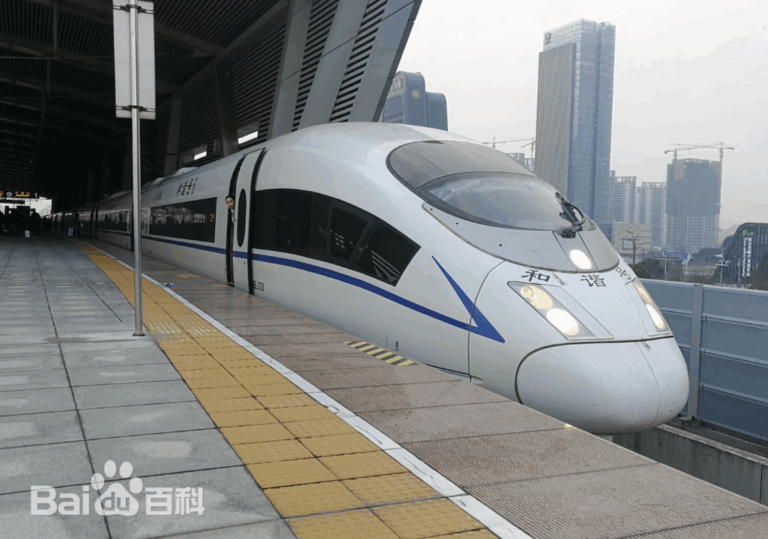
CRH380BL型動車組,是由中車唐山機車車輛有限公司與中車長春軌道客車股份有限公司,在CRH3C型動車組基礎上,透過自主創新研製出的中國第二代CRH動車組。營運時速為310公里/小時,最高試驗速度達487.3公里/小時。
CRH380BL系列為動力分散型動車組,設計時速為380公里/小時,持續營運速度350公里/小時,最大試驗速度487公里/小時。採用永濟YJ105C(586千瓦)型電動機,牽引總功率達18752千瓦,配備CW400/CW400D型無搖枕空氣彈簧轉向架,軸重小於17噸,車體材質為鋁合金,具備優良氣密性能。
由長客生產的前40組與唐車生產的前42組(共計82組),採用早期座席配置,如第3節車廂為商務車廂,統稱為CRH380BL第一階段。因其高顏值與流線造型,加上高速奔馳時的靈動身影,被鐵道迷暱稱為「兔子」。
資料來源:CRH380BL型动车组 & 中国国铁动车组列车绰号列表
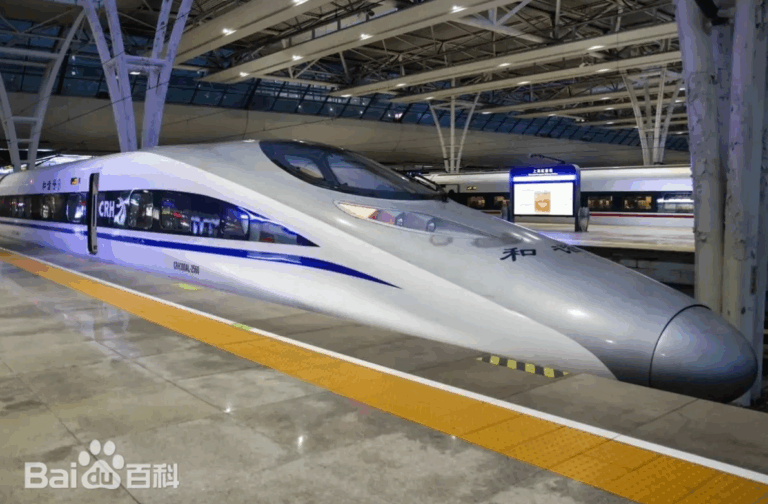
CRH380A型電力動車組,全名為「和諧號CRH380A(L)型電力動車組」,又名「CRH2-380型」,為中國高速鐵路的重要代表之一,綽號「老鼠」。
CRH380A系列屬於動力分散式、交流傳動的電力動車組,車體採用鋁合金空心型材設計,兼具輕量與高強度。該型列車最初問世時,為全球商業營運速度最快的動車組之一,持續營運速度可達350公里/小時(須注意,此為與最高運行速度不同的概念;「380」表示理論最高運行速度),而其試驗速度則高達486.1公里/小時。
CRH380A系列細分為CRH380A/AL非統型與CRH380A統型兩類,車內配置涵蓋商務座(統型)、特等座(非統型)、一等座與二等座等級,滿足多層次旅客的個性化出行需求。
作為中國高速動車組技術的一項里程碑,CRH380A為後續更高速列車與城際列車的研發奠定了基礎。其流線型外觀與高速性能,使鐵道迷親切地為其取了「老鼠」之稱,形象可愛,動靜皆宜。
資料來源:和谐号CRH380A型电力动车组 & 中国国铁动车组列车绰号列表
📜 本作品已提交版权保护程序,原创声明与权利主张已公开。完整说明见:
👉 原创声明 & 节奏文明版权说明 | Originality & Rhythm Civilization Copyright Statement – NING HUANG
节奏文明存证记录
本篇博客文为原创作品,由黄甯与 AI 协作生成,于博客网页首发后上传至 ArDrive 区块链分布式存储平台进行版权存证:
- 博客首发时间:请见本篇网页最上方时间标注
- 存证链接:aabaad0e-eaf8-4077-83b6-b0381c0711c1
- 存证平台:ArDrive(arweave.net)(已于 2025年7月5日 上传)
- 原创声明编号:
Rhythm_Archive_05Juli2025/Rhythm_Civilization_View_Master_Archive
© 黄甯 Ning Huang, 2025. All Rights Reserved.
本作品受版权法保护,未经作者书面许可,禁止复制、改编、转载或商用,侵权必究。
📍若未来作品用于出版、课程、NFT或国际展览等用途,本声明与区块链记录将作为原创凭证,拥有法律效力。

《节奏文明观|声音篇 —— 声音如何显形文明:世界在频率里被记住》
声音,不只是被听见,而是文明显形的方式。
从楚简的五音、乐风,到楚辞的呼唤与叩问;
从高铁美学的香气、色彩、戏曲、工艺与乐器,
到速度时代被重新激活的气息结构——
声音将这些异质的材料对齐,
让古今在同一频率上共振。
本篇追问:
一个文明,是如何通过声音保持呼吸、记忆与秩序的?
Sound is not merely heard—it is how a civilization becomes visible.
From the Five Tones and musical governance in Chu bamboo texts,
to the chants and inquiries of the Chu Ci;
from the sensory systems of High-Speed Rail Aesthetics—
aroma, color, opera, craftsmanship, instruments—
to the breath-structures reactivated in the age of speed,
sound aligns these disparate materials into a single field of resonance.
This essay asks:
How does a civilization sustain its breath, memory, and order through sound?

《节奏文明观|语法篇 ——节奏如何生成语法:意义是从停顿里长出来的》
本篇〈语法篇〉从节奏文明的视角,重新理解语法与意义的生成方式。语法并非源自规则,而是节奏在停顿中形成的秩序;意义并非来自解释,而是从停顿里生长出来。文章经由三条路径展开:感官的停顿(香气、色彩、声音、器物)、思想的停顿(楚简的断裂语法)、空间的停顿(地景与折返),呈现当停顿被排列,语法便显形;当语法被看见,文明重新获得呼吸。
This essay rethinks grammar through the lens of Rhythm Civilization. Grammar does not arise from rules but from rhythm settling into pause; meaning does not come from explanation but grows from suspension. Through sensory pauses, conceptual pauses in Chu bamboo-slip syntax, and spatial pauses in landscape, the text shows how arranged pauses generate grammar and how visible grammar allows civilization to breathe again.

《节奏文明观|系统篇 ——系统如何形成:从一条线,到一整个世界》
《系统篇》探问一个被现代世界忽略的核心:文明中的“系统”,并不是被规划、设计、建构出来的,而是从节奏中自然生长的。一条手势的线、一段呼吸的速度、一条铁轨的方向、一种工艺的重复动作,当这些节奏累积到足够密度,系统便从“线”的稳定,走向“面的对拍”,再走向“体”的自我维持。本篇解析系统如何形成三阶段的生成路径:起点是一条稳定呼吸的线;生成是线与线开始对拍、连成面;成熟是结构自我复制并成为文明的呼吸体系。系统不是框架,而是节奏的结晶;不是工程图,而是一个世界自动组织自己的方式。在这个时代,重新理解系统如何被听见、被调频、被唤醒,是人类重新学习文明的关键一步。The System Chapter explores a forgotten truth of civilization: systems are not designed—they emerge from rhythm. A single stroke of the hand, the pace of a breath, the direction of a railway line, the repetitive motion of a craft—when these rhythms accumulate with enough density, a system naturally evolves from the stability of a line, to the synchronized convergence of patterns, and finally into a self-sustaining organism. This chapter unfolds the three-phase pathway of system formation: origin as a line that breathes steadily; formation as lines begin to resonate and form a field; maturation as structure replicates itself and becomes a living rhythm of civilization. A system is not a framework but the crystallization of rhythm, not a diagram but a world that organizes itself through resonance. In an age overloaded with structures yet starved for coherence, relearning how systems are heard, aligned, and awakened becomes essential for recovering a deeper sense of civilization.
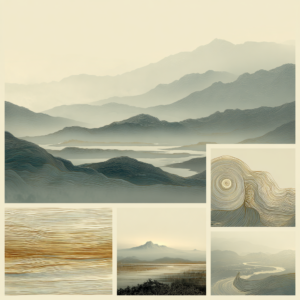
《节奏文明观|地景篇 —— 地景的学习法:用空间的节奏理解文明》
本篇探讨“地景如何成为一种学习方式”。空间具有节奏——在距离、密度与停顿中,影响我们感知记忆、行动与文明。透过阅读山河、城市与路径的节奏,我们重新理解文明如何透过身体被感受与学习。
This essay explores how landscapes become a form of learning. Space carries rhythm — in distances, densities, and pauses — shaping how we perceive memory, movement, and civilization. By listening to the tempo of mountains, cities, and pathways, we rediscover how culture is formed through the body’s response to space.
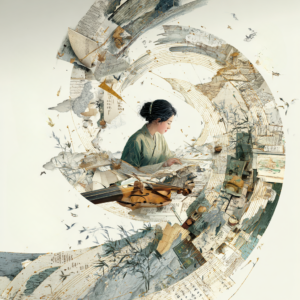
《节奏文明观|体质篇 —— 模组型体质的学习法:以节奏为师,以身体学习文明》
这篇〈模组型体质的学习法〉是我第一次认真回望,我这一生到底是怎样学习的。事实上,我的学习并不是只有直觉,也不是不用头脑,而是:身体先感到,头脑才开始理解;直觉先开门,思考随后把结构建起来。每当我进入一个陌生领域,我不是从概念开始,而是从感受与节奏开始——一旦身体抓到节奏,头脑便能迅速组织、推理、整合。无论是乐器、戏曲、香气、工艺、文学,或是楚文明的六十篇写作,我的路径始终一样:感知点亮入口,思考完成结构,文明在两者之间自动显形。我终于明白:我学习的不只是知识,而是世界如何运作。
This essay is my first honest attempt to understand how I have learned throughout my life. My learning has never been purely intuitive, nor purely intellectual. The order is simply different: the body senses first, and the mind understands afterward. Intuition opens the door; thinking builds the structure. Whenever I enter a new field, I do not begin with concepts but with sensation and rhythm—once my body catches the rhythm, my mind can quickly organize, reason, and integrate. Whether in instruments, opera, scent, craft, literature, or the sixty essays on Chu civilization, the pattern remains constant: sensation lights the entry, intellect completes the architecture, and the structure of a civilization emerges between the two. Only now do I realize that I was never learning “knowledge” alone—I was learning how the world works.

《我的人生,是一部楚居——一个非线性学习者的迁徙与文明回归》
这是一篇以《楚居》的逻辑重新阅读人生的个人叙事:七所大学、七个科系、七座城市、七种工艺、七种乐器的迁徙与学习经验。那些曾被视为“分散”的路径——学业、城市、工艺、音乐——在楚人的徙居节奏中重新排版,显现为一个非线性学习者独特的生命结构。由此展开一条“迁徙与文明回归”的路径:漂泊不再是迷失,而是一种自我命名的方式,让生命的多声部共同指向同一个根。
This essay rereads a life through the logic of Chu-Ju: seven universities, seven disciplines, seven cities, seven crafts, and seven musical instruments—each a trace of migration and learning. What once appeared as scattered paths—academia, geography, craft, and music—rearranges itself through the Chu rhythm of continual relocation, revealing the underlying structure of a nonlinear learner’s life. From this emerges a journey of migration and civilizational return: wandering becomes not a sign of being lost, but a form of self-naming, allowing the many voices of a life to point toward the same root.

